![]()
![]()
![]()
Use LEFT and RIGHT arrow keys to navigate between flashcards;
Use UP and DOWN arrow keys to flip the card;
H to show hint;
A reads text to speech;
14 Cards in this Set
- Front
- Back
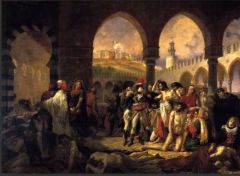
|
Gros, Antoine-Jean, French, Neoclassical-Romantic Napoleon at the Plague House at Jaffa, 1804, 17.5' x 23.5' Oil on canvass Student of David. "David's pupils laid the foundations for the Romantic movement by exploring the realm of the exotic and the erotic, and often by turning to fictional narratives for the subjects of their paintings." p. 647 "(his) fascination with the exoticism of the Muslim world ... represented a departure from Neoclassicism. This, along with Gros' emphasis on death, suffering, and an emotional rendering of the scene, presaged core elements of the artistic movement that would soon displace Neoclassicism - Romanticism." p. 643 |
|

|
Ingres, Jean-Auguste-Dominique, French, Neoclassical-Romantic Grand Odalisque, 1814, 3' x 5.5' Oil on canvass Student of David. "David's pupils laid the foundations for the Romantic movement by exploring the realm of the exotic and the erotic, and often by turning to fictional narratives for the subjects of their paintings." p. 647 Borrowed from Raphael and Italian Mannerists
|
|
|
Romaticism |
Influenced by Rousseau. "Romantics asserted freedom was the right and property of all. They believed the path to freedom was through imagination rather than reason and functioned through feeling rather than thinking. ... The Romantic imagination stretched its perception of the Middle Ages into all the worlds of fantasy open to it, including the ghoulish, the infernal, the terrible, the nightmarish, the grotesque, the sadistic, and all the imagery that comes from the chamber of horrors when reason sleeps. ... Related to the imaginative sensibility was the period's notion of the sublime. ... feelings of awe mixed with terror. Accompanying this taste for the sublime was the taste for the fantastic, the occult, and the macabre - for the adventure of the soul voyaging into the dangerous reaches of the imagination." p. 650 |
|
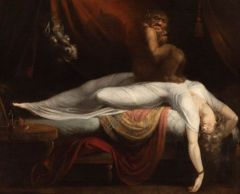
|
Fuseli, Henry, Swiss-English, Romantic The Nightmare, 1781, 3' x 4' Oil on canvass "Fuseli was among the first to attempt to depict the dark terrain of the human subconscious." p. 650 |
|
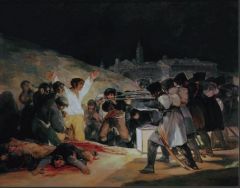
|
Goya, Francesco, Spanish, Romantic Third of May, 1808, Painted 1814-15, 9' x 13' Oil on canvass Depicts the invading French army massacring Spanish peasants in revenge for an attack the previous day. |
|
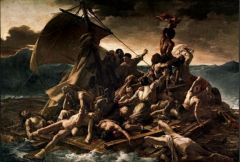
|
Gericault, Theodore, French, Romantic Raft of the Medusa, 1818-19, 16' x 23.5' Oil on canvass Trained as a Neoclassist, the painting uses the massive, heroic motif, but in the Romantic spirit depicts a jumble of writhing bodies in every attitude of suffering, despair, and death. The painting is based an actual event - the wreck of the frigate, Medusa, and the attempt by passengers to survive on a make-shift raft. The placing of a black survivor as the one waving the flag at the top is an indication of Gericault's commitment to end slavery. |
|
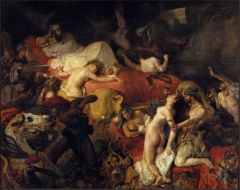
|
Delacroix, Eugene, French Romantic Death of Sardanapalus, 1827. 12' x 16' Oil on canvass |
|
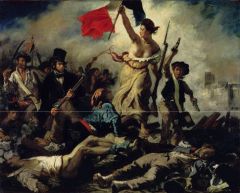
|
Delacroix, Eugene, French Romantic Liberty Leading the People, 1830. 8.5' x 11' Oil on canvass |
|
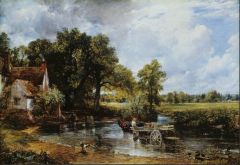
|
Constable, John, English, Romantic The Haywain, 1821, 4' x 6' Oil on canvass |
|

|
Turner, John Mallord William, English, Romantic sensibilities. The Slave Ship, 1840, 3' x 4' Oil on Canvass |
|
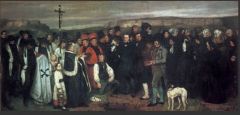
|
Courbet, Gustave, French Realism
Burial at Ornans, 1849, 10' x 22' Oil on canvass |
|
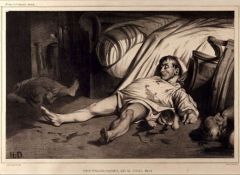
|
Daumier, Honore, French, Realism Rue Transnonain, 1834, 1' x 1.5' Lithograph |
|
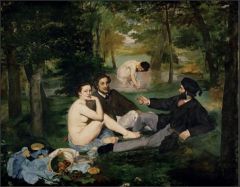
|
Manet, Eduard, French, Realism (Impressionism) Le Dejeuner sur l'Herbe, 1863, 7' x 9' Oil on canvass |
|
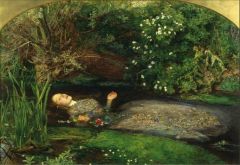
|
Millais, John Everett, English, Pre-Raphaelite Brotherhood
Ophelia, 1852, 2.5' x 3.5' Oil on canvass |

